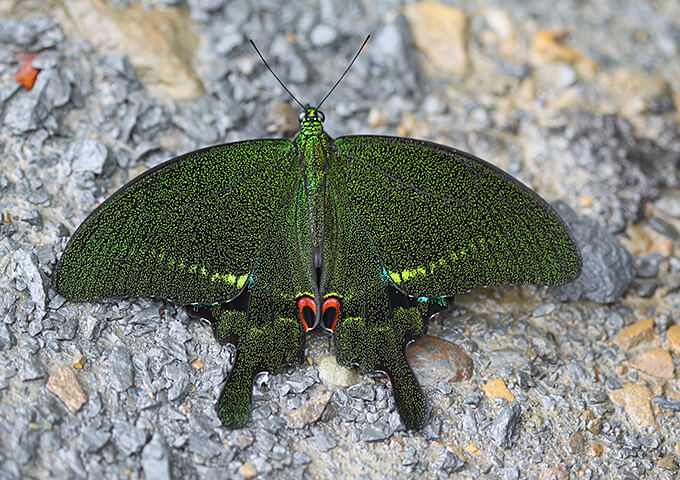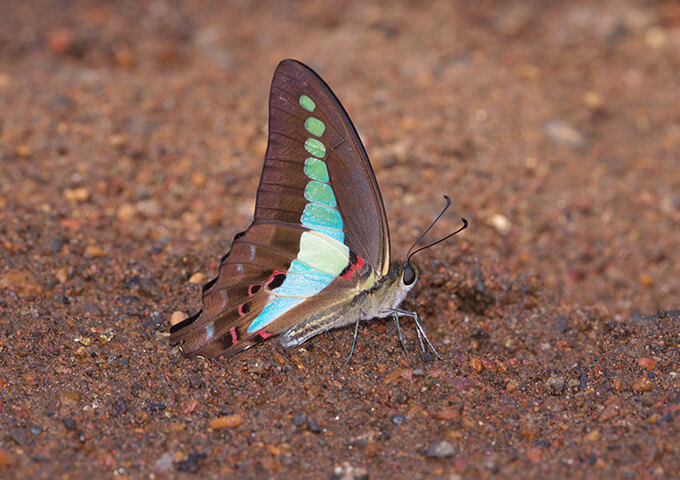

Family Papilionidae [Swallowtails & Birdwings]
This family include many large and brilliantly coloured butterflies. The forelegs are perfect in both sexes with an epiphysis on tibia [found only in the Papilionidae and the Hesperiidae]. Each leg has a pair of simple, well-developed tarsal claws. The bases of the antennae are close together. The proboscis is long. Forewing has short vein 1a. Hindwing vein 1a absent [present in all other families]. Cell closed on both wings. Most have a tailed hindwing [but not all]. Hindwing cannot cover the abdomen. The forked appearance of the swallowtails like hind wings, which can be seen when the butterfly is resting with its wings spread, gave rise to the common name swallowtail.
Swallowtails are black bodied or red bodied. Many are toxic and unpalatable to predators. Males have scent brushes and they gather in large numbers for mudpuddling. Eggs are large and spherical. Caterpillar with large head, withdrawable under segment 2. The swallowtail caterpillars have a forked organ called osmeterium, which emits pungent smell when disturbed [page…]. Pupa is attached by the tail, normally in a perpendicular position, and further secured by a silk loop round the middle. Few pupae wriggle vigorously and few produce hissing sound by rubbing few segments together, deterring predators. The largest butterfly, Southern birdwing belong to this family.